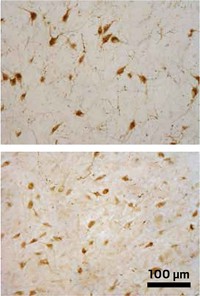Advertisement
Grab your lab coat. Let's get started
Welcome!
Welcome!
Create an account below to get 6 C&EN articles per month, receive newsletters and more - all free.
It seems this is your first time logging in online. Please enter the following information to continue.
As an ACS member you automatically get access to this site. All we need is few more details to create your reading experience.
Not you? Sign in with a different account.
Not you? Sign in with a different account.
ERROR 1
ERROR 1
ERROR 2
ERROR 2
ERROR 2
ERROR 2
ERROR 2
Password and Confirm password must match.
If you have an ACS member number, please enter it here so we can link this account to your membership. (optional)
ERROR 2
ACS values your privacy. By submitting your information, you are gaining access to C&EN and subscribing to our weekly newsletter. We use the information you provide to make your reading experience better, and we will never sell your data to third party members.
Biological Chemistry
Sugar mimic could help epileptics
October 23, 2006
| A version of this story appeared in
Volume 84, Issue 43
For many epileptics, a spoonful of sugar brings on seizures, but the sugar mimic 2-deoxy-D-glucose (2DG) may actually help prevent them, according to neurobiologist Avtar Roopra at the University of Wisconsin, Madison, and colleagues (Nat. Neurosci., DOI: 10.1038/nn1791). Biomedical researchers have long known that sugar-free diets thwart seizures in epileptics, but the exact mechanism has been something of a mystery. It turns out that, in epileptics, high levels of the cofactor NADH, a by-product of glycolysis, disrupt normal regulation of a neuron's chromatin, the quaternary structure of DNA. This disruption leads to expression of genes that bring on severe seizures. Roopra and his coworkers found that 2DG blocks glycolysis, thereby preventing epileptic seizures in rats without taking away the sweet taste of their food. The ketogenic (low sugar) diet "requires a lot of control and often fails with children, who are fed up of missing out on sweets and cookies," Roopra says. "But 2DG may work as an effective substitute."



Join the conversation
Contact the reporter
Submit a Letter to the Editor for publication
Engage with us on Twitter